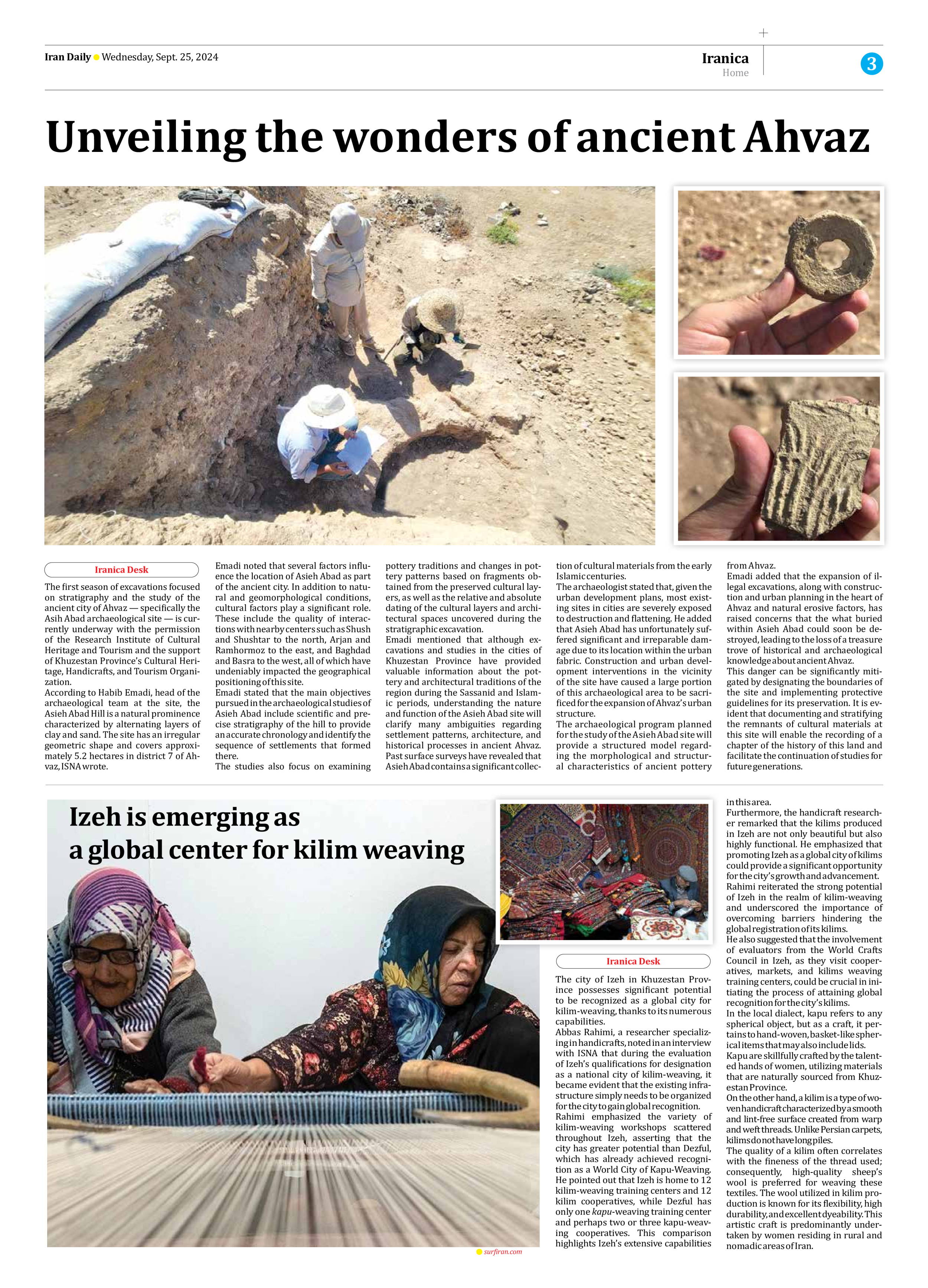
Unveiling the wonders of ancient Ahvaz
The first season of excavations focused on stratigraphy and the study of the ancient city of Ahvaz — specifically the Asih Abad archaeological site — is currently underway with the permission of the Research Institute of Cultural Heritage and Tourism and the support of Khuzestan Province’s Cultural Heritage, Handicrafts, and Tourism Organization.
According to Habib Emadi, head of the archaeological team at the site, the Asieh Abad Hill is a natural prominence characterized by alternating layers of clay and sand. The site has an irregular geometric shape and covers approximately 5.2 hectares in district 7 of Ahvaz, ISNA wrote.
Emadi noted that several factors influence the location of Asieh Abad as part of the ancient city. In addition to natural and geomorphological conditions, cultural factors play a significant role. These include the quality of interactions with nearby centers such as Shush and Shushtar to the north, Arjan and Ramhormoz to the east, and Baghdad and Basra to the west, all of which have undeniably impacted the geographical positioning of this site.
Emadi stated that the main objectives pursued in the archaeological studies of Asieh Abad include scientific and precise stratigraphy of the hill to provide an accurate chronology and identify the sequence of settlements that formed there.
The studies also focus on examining pottery traditions and changes in pottery patterns based on fragments obtained from the preserved cultural layers, as well as the relative and absolute dating of the cultural layers and architectural spaces uncovered during the stratigraphic excavation.
Emadi mentioned that although excavations and studies in the cities of Khuzestan Province have provided valuable information about the pottery and architectural traditions of the region during the Sassanid and Islamic periods, understanding the nature and function of the Asieh Abad site will clarify many ambiguities regarding settlement patterns, architecture, and historical processes in ancient Ahvaz. Past surface surveys have revealed that Asieh Abad contains a significant collection of cultural materials from the early Islamic centuries.
The archaeologist stated that, given the urban development plans, most existing sites in cities are severely exposed to destruction and flattening. He added that Asieh Abad has unfortunately suffered significant and irreparable damage due to its location within the urban fabric. Construction and urban development interventions in the vicinity of the site have caused a large portion of this archaeological area to be sacrificed for the expansion of Ahvaz’s urban structure.
The archaeological program planned for the study of the Asieh Abad site will provide a structured model regarding the morphological and structural characteristics of ancient pottery from Ahvaz.
Emadi added that the expansion of illegal excavations, along with construction and urban planning in the heart of Ahvaz and natural erosive factors, has raised concerns that the what buried within Asieh Abad could soon be destroyed, leading to the loss of a treasure trove of historical and archaeological knowledge about ancient Ahvaz.
This danger can be significantly mitigated by designating the boundaries of the site and implementing protective guidelines for its preservation. It is evident that documenting and stratifying the remnants of cultural materials at this site will enable the recording of a chapter of the history of this land and facilitate the continuation of studies for future generations.







